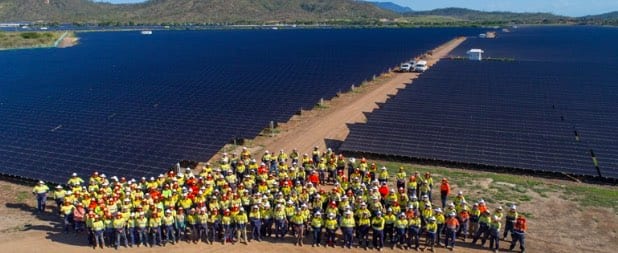The Sun Metals solar farm – set to take over Clare solar farm’s short-lived mantle as the biggest solar installation in the state of Queensland – has begun exporting to the grid.
The 124MW (AC) Sun Metals solar farm overtakes the 100MW Clare solar farm as the biggest in the state, and began exporting into the grid late on Wednesday.
The solar farm is notable because it will be used to supply around one-third of the power needed by the Sun Metals zinc refinery, and its low cost (and cost certainty) will likely underpin a $300 million expansion of the complex.
Sun Metals was the first Australian big energy user to turn to large-scale solar, but since then many other companies have followed, including Telstra, Westpac, and most recently Mars Australia, whose six factories will be powered by a solar farm in Victoria.
“Once the solar farm is operational it will enable the refinery to be the largest single-site renewable consumer in Australia,” CEO Yun Choi recently told the Townsville Bulletin.
“The solar farm will be one of a kind in that it will directly power a large industrial user and export electricity into the National Electricity Market – so I think that makes it pretty innovative.”
Other big energy users are now proposing even bigger investments, with UK billionaire Sanjeev Gupta talking of a 1 gigawatt solar investment in South Australia to power the Whyalla steelworks, and potentially more than 10GW of solar around the country.
Construction of the the Sun Metals solar farm was largely completed by contractor RCR Tomlinson a month ago, and the various sections will be progressively commissioned over the next few weeks.
On Wednesday and Thursday the solar farm generated a peak of 36MW, and that output will grow as more connection points are switched on over coming weeks.












